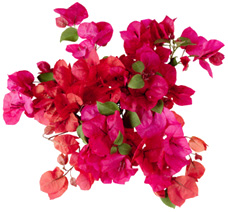Spring Gardening in Desert
Warmer weather means it is time to think about making some changes in the care we give our gardens. This spring has been a wild ride of warm warms, cool colds, a little rain and some big winds. The combination makes for interesting times working with irrigation, pests and all things Desert gardening.
 There are some spring things that remain the same each and every year. We remind you to reset your irrigation time clock to coincide with daylight savings. Check the back-up battery (if appropriate) at the same time, always a good idea to change it before summer hits. Many times clocks will revert to factory presets if power is interrupted. This does not always result in effective irrigation, especially through the summer months.
There are some spring things that remain the same each and every year. We remind you to reset your irrigation time clock to coincide with daylight savings. Check the back-up battery (if appropriate) at the same time, always a good idea to change it before summer hits. Many times clocks will revert to factory presets if power is interrupted. This does not always result in effective irrigation, especially through the summer months.
While on the subject of time clocks: this is a good time to review water times for each irrigation station—how long is the water running when the sprinklers come on? 3 minutes? 8 minutes? 45 minutes? Three minutes isn’t enough water for anything this time of year. You want to create deep roots with whatever is planted in the yard. Watering less frequently, for longer periods of time will achieve this. Many believe running a 3-5 minute station 2 x day will have the same effect. This is false; you just water the same roots twice, creating shallow roots. This is one of the most common occurring mistakes we see. If you have drip irrigation, each station could easily require 45-60 minutes and must be on that long to ensure enough water gets to the deepest roots. Work with your gardener to be sure you are on the same page when it comes to watering the garden.
Spring is a temperature roller coaster every year, it can be 95 degrees one day and 75 the next. This year is no different. Why is this an issue? When temperatures rise much above 90 degrees, shallow rooted plants (turf & flower beds) quickly dry out and need water whereas deep-rooted trees and shrubs have no problem. Irrigation becomes tricky. It is easier to add water than take it away. Leave your time clock set to water 2-3 x week; simply tap the manual irrigation option to add an additional water day if needed. Remember, we do not suggest watering daily until temperatures remain consistently 90 – 95 degrees and NEVER water more than once a day. More time, less frequent water is the key to healthy plant life.
February through June is crucial for fertilizing since spring is the optimum growing season. Use the right tool for the trade. Blooming plants have different feed needs than citrus trees; roses, different than palms. The many plants in your garden require more than a one size fits all feeding protocol. We like the Dr. Earth organic fertilizers with their array of options to tempt the botanical palette.
 Wind is always a factor of spring. This year the wind has been particularly violent with downed or damaged trees present after every wind storm. There is a direct correlation between appropriate irrigation and damage to these trees. Deep and infrequent water forces the roots to travel deep into the earth thus providing the necessary anchor to stand up to the winds. This same watering tactic creates healthy limbs which are less likely to break off. Of course tree trimming is a crucial part of the equation but it should be noted that appropriate watering carries equal weight.
Wind is always a factor of spring. This year the wind has been particularly violent with downed or damaged trees present after every wind storm. There is a direct correlation between appropriate irrigation and damage to these trees. Deep and infrequent water forces the roots to travel deep into the earth thus providing the necessary anchor to stand up to the winds. This same watering tactic creates healthy limbs which are less likely to break off. Of course tree trimming is a crucial part of the equation but it should be noted that appropriate watering carries equal weight.
The wind stirs up dust which invites red spider mite into the mix. These mites attack a variety of plant life, from roses to photinia, impatiens to Italian cypress. Look for a dusty appearance on the underside of leaves. Foliage often yellows and forms tiny dots. In only the most severe cases will you see actual webbing. The very best line of defense against mites is to rinse the plants off occasionally, just enough to remove the layer of dust that accumulates which creates the perfect environment for mites. (A good rain will also do the trick. Remember to turn the time clock off for a few days to allow soil to dry out – remember to turn it back on again.) Mealy bug is the cottony looking goop that appears in the underpinnings of plants like hibiscus, pittosporum, even citrus trees. You will find it in the joints of small branches below leaves you see casually. Scale is another opportunistic pest, a bit more crusty in appearance but equally tenacious. All three are difficult to see because they are not often on the sunny side of the plant. Once any of these pests take hold, they are difficult to completely eradicate. Take a little time to get close and personal with the members of your garden to prevent these pests from taking hold.
 The warmer spring weather brings other pests drawn to new growth on plants such as bougainvillea and citrus trees. Leaf minor, looper and thrip all appear when temperatures rise. They just love the luscious, tender new foliage. There are several options with which to arm yourself in the war against garden enemies, we ask you to bring in a leaf sample to ensure you have proper weaponry for the battle. Care must be taken when offering pesticides to fruit trees and other edibles as many are not food safe. We are here to help.
The warmer spring weather brings other pests drawn to new growth on plants such as bougainvillea and citrus trees. Leaf minor, looper and thrip all appear when temperatures rise. They just love the luscious, tender new foliage. There are several options with which to arm yourself in the war against garden enemies, we ask you to bring in a leaf sample to ensure you have proper weaponry for the battle. Care must be taken when offering pesticides to fruit trees and other edibles as many are not food safe. We are here to help.
Enjoy spring in the Desert!